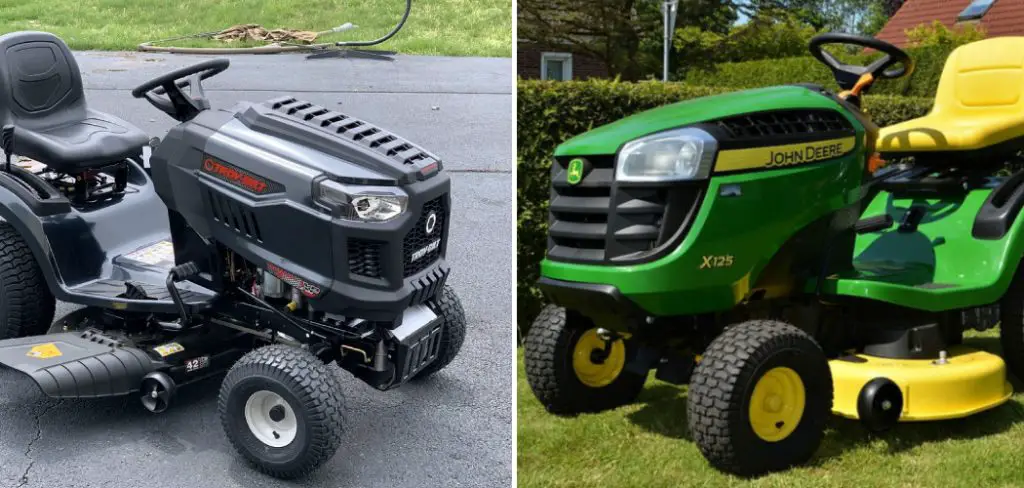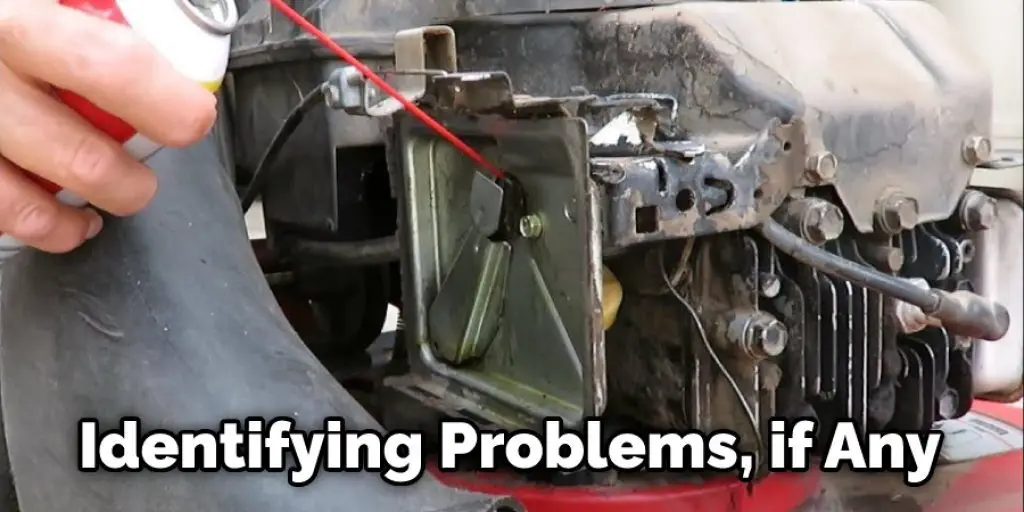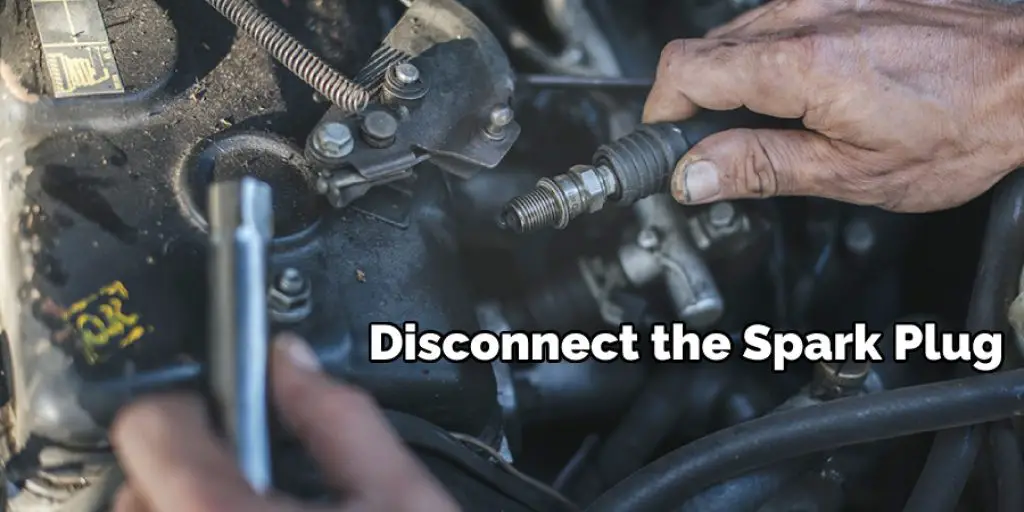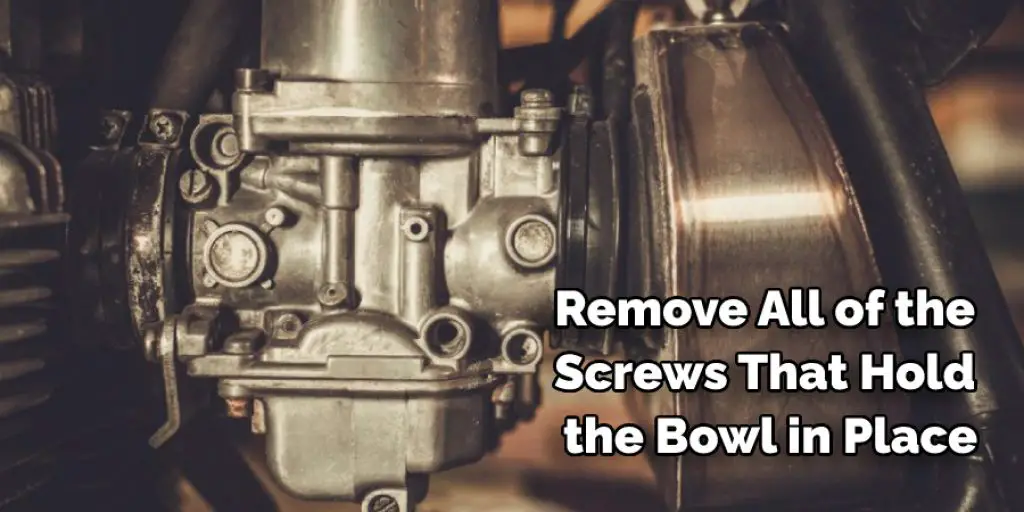How to Clean a Carburetor on a Riding Lawn Mower
This blog post is an informational article on how to clean a carburetor, which is the engine of your riding lawnmower. A carburetor takes gas and mixes it with air so that when you turn on the lawnmower, it will start up quickly.

If you do not regularly clean out a dirty or clogged carburetor, then the engine may not run as well and, in some cases, can stop running altogether. This article provides excellent tips for keeping your lawnmower’s engine healthy by ensuring its fuel system functions properly.
Always disconnect from the power source before servicing any part of the machine; use compressed air to blow away debris from inside the carburetor if possible, or use a clean rag to wipe the dirt away. This blog post will show you how to clean a carburetor on a riding lawn mower.
5 Steps to Follow on How to Clean a Carburetor on a Riding Lawn Mower
Step One: Identifying Problems, if Any.
If your riding lawn mower is experiencing any of the following problems, clean the carburetor. Suppose you’re not sure if it does; just do some quick diagnostics by disconnecting the spark plug and turning on the mower. Then try to start it several times without giving it gas.

If it does not start, chances are you’ll need to clean your carburetor, or if it does start you can skip ahead to step two. However, if your throttle is sticking, meaning the mower idles too high, and when you take off from a standstill, it’s unable to keep up with your foot on the gas pedal, then you should clean your carburetor.
If your engine is sputtering or it’s running on and off, you should also clean your carburetor. If the engine is sputtering, this can be caused by a dirty air filter and a faulty ignition coil on older mowers. If you’re experiencing all of these symptoms, then cleaning the carburetor on your riding lawn mower would be needed.
Step Two: Identifying the Carburetor.
You can find the carburetor on your riding lawn mower by looking under the seat. It’s usually covered in black plastic housing, although I have seen some that are completely exposed. Also, check underneath the gas tank by tilting it back because it might be there too!
It’s shaped like a rectangle with two hoses coming out of the top. If you’re still having difficulty finding it then the chances are good that you have a model with an exposed carburetor. These models require the removal of the gas tank and seat to access the carburetor.
Or you may have a model that has an exposed carburetor with the gas tank and seat still in place. These models usually have a plastic cap over the top of the carburetor to protect them from the elements. Again, replacement parts are available for this model.
Step Three: Disconnect the Spark Plug.
The next step is to disengage your lawn mower’s spark plug so that it will not accidentally start during the cleaning process. This is easy to do; however, it’s important to remember where you disconnected it from to attach it back later.

It would help if you also used a flathead screwdriver to disengage the spark plug wire by pushing in towards the engine block, making sure that it pops out of its port. Finally, you will need to disconnect the wire from the spark plug itself.
To do this, use your flathead screwdriver to push down on the metal tab that holds the wire in place. Then pull the wire out of the spark plug. All of these steps are needed to ensure safety when cleaning a carburetor on a riding lawnmower. In addition, this will help in how to clean a carburetor on a riding lawn mower.
Step Four: Prepare the Work Area.
Next, you will need to prepare your materials and the place that you will be working. First, you will need a clean workspace and rags to wipe parts and clean up gas and dirt from around the carburetor later.
It would help if you also chose a safe spot away from engines or other ignition sources where you can plug in your spark plug wire to an appropriate power source. Finally, it would be good to put on gloves during this process because some carburetors are leaky and can decompose over time.
You’ll also want to wear safety goggles or glasses. This is unnecessary, but you will be exposed to small engine fuel and fumes that are not healthy for your eyes. If you wear glasses, you will still need to wear a face mask to keep fumes from your nose and lungs.
Step Five: Remove the Bowl From the Carburetor.
To remove the bowl from your carburetor, you will need a flathead screwdriver and a Phillips head screwdriver. With both of these tools, you should be able to remove all of the screws that hold the bowl in place. The location of each screw will vary, but they should all be on the top of the carburetor.

So, after you find the first screw, make sure to look closely for more. Also, it is probably a good idea to put your screws into a small container or plastic bag so that they don’t get lost when you remove them. Some bowls are held on by a metal clip that connects the bowl to the rest of the carburetor.
You can pull this metal clip off with your flat head screwdriver. Then, you can lift up and remove the bowl from underneath its opening in the carburetor. It’s important to remember that this is a small bowl that might have gas inside.
Frequently Asked Questions
Can You Clean a Carburetor without Removing It?
Yes, you can clean a carburetor without removing it. To remove the carburetor, you will need to disconnect the fuel line and pull out the float bowl. Next, make sure that the air filter is removed and then take off the air cleaner housing. You should also turn off your engine before beginning to clean it.
What’s the Best Way to Clean a Carburetor?
The best way to clean a carburetor is to use a vacuum cleaner. A professional mechanic will always recommend using a vacuum cleaner to get rid of the dirt and debris inside the carburetor.
What Can I Soak a Carb in To Clean It?
To Soak a Carb in Water to Clean It, You Can :
- Soak the whole piece of bread in water for 30 minutes.
- Soak the bread in vinegar or lemon juice and then wash with soap and water.
- Put the bread in a bowl of cold water with 1 tablespoon of baking soda added to it and let sit for 10 minutes before washing with soap and water.
Will Vinegar Clean a Carburetor?
Vinegar is one of the most popular household cleaners in the world. Its versatility has made it a popular choice for many tasks. Some people have even claimed that vinegar can clean your car’s carburetor, but others have disputed this claim.
I am not sure if vinegar will work as a cleaner on a carburetor, but it is worth trying out!
Conclusion
The carburetor on your riding lawn mower may need to be cleaned if it starts flooding out the engine or is leaking fuel. To clean a carburetor, remove the air filter and pour an ounce of gas into each bowl before starting up your machine. If you see any small clumps in this mixture, then replace the gasket inside the funnel because it needs replacing.
Apply some grease to both sides of the new gasket before putting it back in its proper place under one of two screws that hold down either side of the cover plate where you poured gasoline earlier. After reading this blog, you should know how to clean a carburetor on a riding lawn mower.
May you also read: 7 Lawn Mowing Tips for a Perfect Lawn








